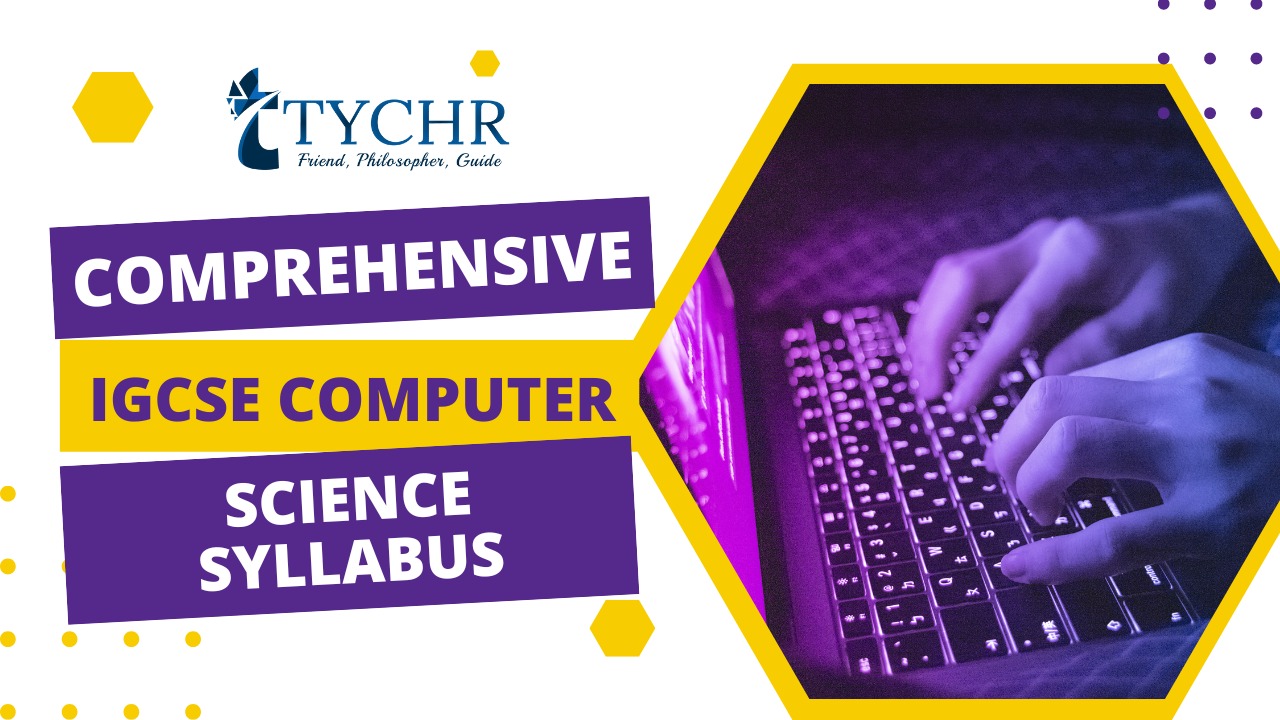Table of Contents
IGCSE Computer Science is a course that provides an introduction to the fascinating world of computer technology and programming. The course covers a range of topics for students who want to understand how computers work and how to program them, including algorithms, programming concepts, data representation, databases, and computer networks. Students who take this course will gain an understanding of key concepts and theories that are used in computer science, as well as practical skills that are essential for success in the technology industry. This course is designed to equip students with a solid foundation in computer science that they can build on in further study or in their future careers.
Paper Format:
This unit provides an overview of the paper format used in IGCSE Computer Science examinations, including the structure and types of questions.
Paper 1: Computer Systems
| Duration | 1 hour 45 minutes |
| Total Marks | 75 |
| Type of Questions | Short-answer and structured questions Questions will be based on Topics 1–6 of the subject content |
| Calculator Usage | No Calculators Allowed |
Paper 2: Algorithms, Programming and Logic
| Duration | 1 hour 45 minutes |
| Total Marks | 75 |
| Type of Questions | Short-answer and structured questions and a scenario-based question
Questions will be based on Topics 7–10 of the subject content |
| Calculator Usage | No Calculators Allowed |
Unit 1: Data Representation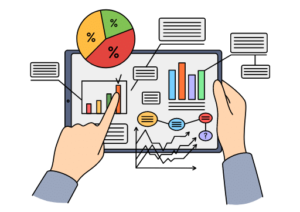
In line with the IGCSE Computer Science curriculum, this unit explores the representation of data in various forms, such as binary, hexadecimal, and ASCII.
| Subtopic Number | Subtopic | IGCSE Points to understand |
| 1.1 | Number Systems | Decimal Number System: The decimal number system is a base-10 number system that uses ten digits (0-9) to represent numbers.
Binary Number System: The binary number system is a base-2 number system that uses two digits (0 and 1) to represent numbers. Hexadecimal Number System: The hexadecimal number system is a base-16 number system that uses sixteen digits (0-9 and A-F) to represent numbers. Conversion between number systems: Conversion between number systems involves converting a number from one base to another. This can be done using a variety of methods, such as long division or using a conversion chart. Binary arithmetic: Binary arithmetic involves performing mathematical operations (addition, subtraction, multiplication, and division) using the binary number system. This can be done using the same methods as decimal arithmetic, but with different rules and techniques. |
| 1.2 | Text, Sound and Images | Text Representation: Text can be represented in a computer system using ASCII or Unicode encoding, which maps characters to binary codes that can be stored and manipulated.
Sound Representation: Sound can be represented in a computer system using digital audio formats, such as WAV or MP3, which sample and quantize the sound wave to create a digital signal that can be stored and played back. Image Representation: Images can be represented in a computer system using digital image formats, such as JPEG or PNG, which use a grid of pixels to represent the colors and brightness of an image. Image Editing: Image editing involves manipulating digital images using software tools to adjust brightness, contrast, color balance, or to remove unwanted elements or add new ones. Sound Editing: Sound editing involves manipulating digital audio using software tools to adjust volume, add effects, cut and splice audio tracks, or remove unwanted noise. Text Editing: Text editing involves manipulating digital text using software tools to format text, change font and color, add hyperlinks, or correct spelling and grammar errors. |
| 1.3 | Data Storage and Compression | Data Storage: Data storage involves saving digital data to a storage medium, such as a hard drive, USB drive, or cloud storage. Data can be stored in different formats, such as text files, images, audio, and video files.
Primary and Secondary Storage: Primary storage, such as RAM and cache, is temporary storage that holds data and instructions currently being used by the CPU. Secondary storage, such as hard drives and flash memory, is non-volatile storage that holds data and programs for long-term use. Data Compression: Data compression is the process of reducing the size of digital data to save storage space and improve transmission speeds. Compression can be lossless or lossy, with lossless compression retaining all original data and lossy compression sacrificing some data to achieve higher compression ratios. File Formats: File formats are used to specify the structure and content of digital data. Different file formats are used for different types of data, such as images (JPEG, PNG), audio (MP3, WAV), and video (MP4, AVI). Backup and Recovery: Backup and recovery involves creating copies of data and programs to protect against data loss due to hardware failures, human errors, or natural disasters. Recovery involves restoring data from backups in case of data loss. Database Systems: Database systems are software applications that organize and manage large amounts of data. They allow users to store, retrieve, and manipulate data efficiently and securely. |
Unit 2: Data Transmission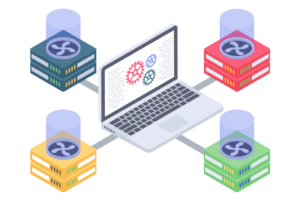
This unit delves into the principles of data transmission, including data transfer protocols and communication technologies.
| Subtopic Number | Subtopic | IGCSE Points to understand |
| 2.1 | Types and Methods of Data Transmission | Analog and Digital Data Transmission: Analog data is continuous and can take on any value within a range, while digital data is discrete and represented in binary form. Analog data is transmitted through analog signals such as sound waves, while digital data is transmitted through digital signals such as electrical pulses.
Serial and Parallel Data Transmission: Serial data transmission involves the transmission of data one bit at a time over a single communication channel, while parallel data transmission involves the transmission of multiple bits at the same time over multiple communication channels. Parallel transmission is faster but more complex and expensive than serial transmission. Synchronous and Asynchronous Data Transmission: Synchronous data transmission involves the transmission of data in synchronized time intervals, while asynchronous data transmission does not require synchronization and can transmit data at irregular intervals. Synchronous transmission is faster but requires more complex hardware and software. Simplex, Half-Duplex, and Full-Duplex Data Transmission: Simplex transmission involves data transmission in one direction only, while half-duplex transmission allows data transmission in both directions but only one direction at a time, and full-duplex transmission allows data transmission in both directions simultaneously. Modulation and Demodulation: Modulation is the process of converting digital data into analog signals, while demodulation is the process of converting analog signals back into digital data. Modulation techniques include amplitude modulation, frequency modulation, and phase modulation. Transmission Media: Transmission media are the physical means through which data is transmitted, and can be classified into guided (wired) and unguided (wireless) transmission media. Guided transmission media include copper and fiber optic cables, while unguided transmission media include radio waves, microwaves, and infrared. Multiplexing: Multiplexing is the process of combining multiple signals into one signal for transmission over a single communication channel. Multiplexing techniques include frequency division multiplexing (FDM), time division multiplexing (TDM), and code division multiplexing (CDM). |
| 2.2 | Methods of Error Detection | Parity Check: A method of error detection in which an extra bit is added to the data to make the total number of 1s either odd or even, depending on the type of parity being used.
Checksum: A method of error detection in which the sum of all the data bytes is calculated and appended to the end of the data. Cyclic Redundancy Check (CRC): A method of error detection that uses polynomial division to generate a remainder that is appended to the data. Hamming Code: A method of error detection and correction in which extra bits are added to the data to allow for the detection and correction of errors. Error-correcting codes (ECC): A method of error detection and correction that uses more sophisticated algorithms than Hamming codes to correct errors in data. Automatic Repeat Request (ARQ): A method of error detection and correction in which the receiver sends a request to the sender to retransmit any data that was not received correctly. |
| 2.3 | Encryption | Encryption is the process of converting plain text into encoded or scrambled text to prevent unauthorized access to sensitive information. It is a way to protect the confidentiality and integrity of data during transmission or storage.
Symmetric Encryption: This encryption method uses the same key for both encryption and decryption. The sender and receiver must have the same key to communicate securely. Asymmetric Encryption: This encryption method uses two different keys, a public key and a private key, for encryption and decryption. The public key is available to everyone, but the private key is kept secret. This method provides more security than symmetric encryption. Hashing: Hashing is a process of converting data of any size into a fixed-size string of text, called a hash. This hash is unique for each input data and cannot be reversed to obtain the original data. Hashing is commonly used to verify the integrity of data. Digital Signatures: A digital signature is a mathematical technique used to validate the authenticity and integrity of digital documents or messages. It uses public-key cryptography to provide assurance that a message was not modified during transmission and that the sender is who they claim to be. Public Key Infrastructure (PKI): PKI is a system that uses public key cryptography to provide secure communication over the internet. It includes digital certificates, certificate authorities, and registration authorities to verify the identity of individuals and organizations. |
READ ALSO: Comprehensive IGCSE Math Syllabus Core
Unit 3: Hardware
Students learn about computer hardware components and their functions
| Subtopic Number | Subtopic | IGCSE Points to understand |
| 3.1 | Computer Architecture | Central Processing Unit (CPU): The CPU is the brain of the computer and is responsible for executing instructions.
Memory: Memory is used to temporarily store data and instructions that the CPU needs to access quickly. Input/Output Devices: Input devices are used to enter data into the computer, while output devices are used to display or output data from the computer. Bus Systems: Bus systems are used to transfer data between different parts of the computer. Clock Speed: Clock speed refers to the speed at which the CPU can execute instructions. Cache Memory: Cache memory is a small, high-speed memory that stores frequently used data and instructions. Instruction Set: The instruction set is a set of instructions that the CPU can execute. Machine Code: Machine code is the lowest-level programming language that a computer can understand, and it consists of binary code. Assembly Language: Assembly language is a low-level programming language that is easier to read and write than machine code, and it is usually converted to machine code by an assembler. |
| 3.2 | Input and Output Devices | Input devices: Input devices are used to provide data and instructions to a computer. Examples of input devices include keyboards, mice, touchscreens, scanners, and microphones.
Output devices: Output devices are used to display or present data processed by a computer. Examples of output devices include monitors, printers, speakers, and projectors. Human-computer interaction: Human-computer interaction refers to the way in which humans interact with computers. This includes the design of user interfaces, the use of feedback to indicate user actions, and the use of input devices that are appropriate for the task. Accessibility: Accessibility refers to the design of technology that can be used by people with disabilities. This includes the use of alternative input and output devices, such as braille displays and voice recognition software. Storage devices: Storage devices are used to store data on a computer. Examples of storage devices include hard drives, solid state drives, USB drives, and memory cards. These devices can be used for both input and output, as data can be stored on them and then retrieved later. |
| 3.3 | Data Storage | Secondary Storage Devices: This subtopic covers various types of secondary storage devices like Hard Disk Drives, Solid State Drives, Optical Disks, and Flash Memory. It explains their characteristics, capacity, access time, and transfer rate.
Storage Capacity: This subtopic covers the concept of storage capacity, including units of measurement such as bits, bytes, kilobytes, megabytes, gigabytes, terabytes, etc. It also covers the impact of file size and compression on storage capacity. Storage Media: This subtopic covers the physical media used for data storage, including magnetic media like hard disks, floppy disks, and magnetic tape, as well as optical media like CDs and DVDs. Storage Devices and Media Selection: This subtopic covers the selection of storage devices and media based on the requirements of the user, including cost, speed, capacity, durability, and portability. Data Integrity and Backups: This subtopic covers the importance of data integrity, data backup, and data recovery. It explains the methods of data backup like full backup, incremental backup, and differential backup. |
| 3.4 | Network Hardware | Network Topologies: The arrangement of network devices and how they communicate with each other in a network.
Network protocols: A set of rules that governs communication between devices on a network. LAN and WAN: LAN stands for Local Area Network, a network that covers a small geographic area, while WAN stands for Wide Area Network, a network that covers a large geographic area. Networking devices: Devices used to connect and manage networks such as routers, switches, and hubs. Network media: Physical transmission media such as cables and wireless communication media such as radio waves, microwaves, and infrared waves. Network security: The measures put in place to protect networks from unauthorized access, attack, theft, or damage. It involves the use of hardware and software tools to ensure network integrity, confidentiality, and availability. |

Unit 4: Software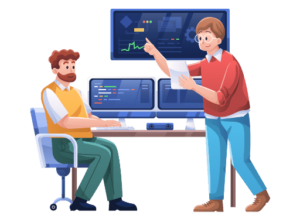
This unit adhering to the computer science syllabus covers various software types, including operating systems, applications, and programming languages.
| Subtopic Number | Subtopic | IGCSE Points to understand |
| 4.1 | Types of Software and Interrupts | Types of software: There are two main types of software: system software and application software. System software includes the operating system and utility programs that help manage and maintain the computer system. Application software includes programs designed to perform specific tasks, such as word processors, spreadsheets, and graphics editors.
Interrupts: Interrupts are signals sent to the processor by external devices or software, which temporarily pause the execution of the current program to handle the interrupt request. Interrupts are used to handle events such as keyboard input, mouse input, or a hardware malfunction. There are two types of interrupts: hardware interrupts, which are generated by external devices, and software interrupts, which are generated by programs running on the computer. |
| 4.2 | Types of programming language, translators and integrated development environments (IDEs) | Types of Programming Languages: This subtopic covers different types of programming languages, including high-level languages, low-level languages, and scripting languages. It also covers the characteristics and features of each type of language.
Translators: Translators are used to convert the source code written in one language into another language that can be executed by the computer. This subtopic covers different types of translators, including compilers, interpreters, and assemblers. Integrated Development Environments (IDEs): An IDE is a software application that provides a comprehensive environment for developers to write, test, and debug code. This subtopic covers the features and benefits of using IDEs, including code editors, debugging tools, and source control systems. Syntax and Semantics: This subtopic covers the concepts of syntax and semantics in programming languages. Syntax refers to the rules that govern how code is written, while semantics refer to the meaning behind the code. Variables and Data Types: This subtopic covers the concepts of variables and data types in programming languages. It covers the different types of data that can be stored in a program, including integers, floating-point numbers, and strings, as well as the different data structures that can be used, such as arrays and lists. Control Structures: Control structures are used to control the flow of a program. This subtopic covers the different types of control structures, including loops and conditional statements, and how they are used in programming. Functions and Procedures: Functions and procedures are used to break down a program into smaller, more manageable pieces. This subtopic covers the differences between functions and procedures, as well as how they are used in programming. Libraries and APIs: Libraries and APIs are used to provide pre-written code that can be used in a program. This subtopic covers the different types of libraries and APIs, as well as how to use them in programming. |
Unit 5: The Internet and Its Uses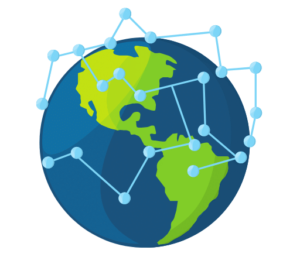
This unit explores the Internet and its applications
| Subtopic Number | Subtopic | IGCSE Points to understand |
| 5.1 | The internet and the world wide web | The Internet: The Internet is a global network of computers that are connected to each other, allowing the exchange of information and communication among its users.
The World Wide Web: The World Wide Web (WWW) is a system of interconnected hypertext documents and other resources, linked by hyperlinks and URLs, that can be accessed via the Internet. Client-Server Model: The client-server model is a model for communication between computers in which one computer acts as the client, which makes requests for information or services, and another computer acts as the server, which provides those services or information. URLs: A Uniform Resource Locator (URL) is a web address that identifies a unique location on the World Wide Web. Web Browsers: A web browser is a software application that enables users to access and view web pages on the World Wide Web. Internet Service Providers (ISPs): An Internet Service Provider (ISP) is a company that provides internet access to customers, usually for a fee. Search Engines: A search engine is a software program that searches a database of websites based on keywords or phrases entered by a user and returns a list of websites that match the search criteria. Cookies: A cookie is a small text file that is stored on a user’s computer by a website, allowing the website to recognize the user’s computer and remember user preferences or other information. |
| 5.2 | Digital Currency | Digital Currency: Digital currency is a form of currency that is only available in digital or electronic form, and is not tangible like physical money.
Types of Digital Currency: There are different types of digital currencies, including cryptocurrencies like Bitcoin, Litecoin, and Ethereum, and centralized digital currencies like PayPal and Apple Pay. Blockchain Technology: Blockchain is a decentralized and distributed digital ledger that records transactions across many computers. It is the technology that underpins cryptocurrencies like Bitcoin. Advantages of Digital Currency: Digital currency offers several benefits over traditional currencies, including faster transactions, reduced fees, increased security, and anonymity. Risks of Digital Currency: There are also risks associated with digital currency, such as volatility, lack of regulation, and the potential for scams and fraud. Future of Digital Currency: Digital currency is a rapidly evolving field, and there is much speculation about its future. Some experts believe that digital currency could become the dominant form of currency in the future, while others are more skeptical. |
| 5.3 | Cyber security | Threats to cyber security: This subtopic covers the various types of threats to cyber security, including malware, phishing, hacking, and social engineering.
Protecting systems and data: This subtopic covers the measures that can be taken to protect systems and data from cyber attacks. This includes firewalls, antivirus software, encryption, and backup and recovery strategies. Password security: This subtopic covers best practices for creating and managing passwords, including creating strong passwords, using password managers, and avoiding common mistakes. Social media and online safety: This subtopic covers the risks associated with social media and online activity, including cyberbullying, identity theft, and oversharing personal information. Cyber crime: This subtopic covers the legal and ethical issues surrounding cyber crime, including cyber stalking, hacking, and identity theft. It also covers the methods used by law enforcement agencies to combat cyber crime. |
Unit 6: Automated and emerging technologies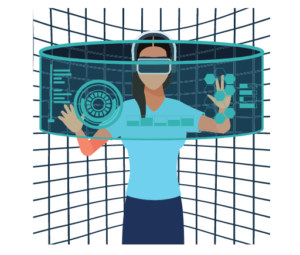
This unit focuses on automated systems and emerging technologies, including artificial intelligence and robotics.
| Subtopic Number | Subtopic | IGCSE Points to understand |
| 6.1 | Automated Systems | Automated Systems: An automated system is a system that performs a task with minimal human intervention. It can be used to control processes, manufacturing lines, transportation systems, and more.
Advantages of Automated Systems: Automated systems offer several advantages such as increased productivity, reduced labor costs, and improved accuracy and precision. They also operate 24/7 without breaks, reducing downtime and increasing efficiency. Disadvantages of Automated Systems: Automated systems may require significant investment in equipment and infrastructure. They may also require specialized skills and knowledge to operate and maintain. Automated systems can also lead to job loss for workers who are replaced by machines. Sensors and Actuators: Sensors are devices that detect changes in the environment and provide data to a control system. Actuators are devices that respond to signals from the control system and perform a physical action, such as opening a valve or turning on a motor. Control Systems: Control systems are software or hardware systems that receive input from sensors and use this data to make decisions and issue commands to actuators. They can be used to control temperature, pressure, speed, and more. Feedback Loops: Feedback loops are used in control systems to maintain a desired output by continuously monitoring and adjusting the input. They can be used to regulate temperature, flow rate, and other variables. Programmable Logic Controllers (PLCs): PLCs are specialized computers that are used to control automated systems. They can be programmed to perform specific tasks and respond to specific inputs, making them useful for a wide range of applications. |
| 6.2 | Robotics | Types of Robots: There are different types of robots, including industrial robots, service robots, and educational robots.
Robot Components: The main components of a robot are actuators, sensors, and microcontrollers. Robot Programming: Basics of robot programming, including robot languages, programming environments, and control systems. Applications of Robotics: Different applications of robotics include manufacturing, medicine, and space exploration. Robot Ethics: Ethical considerations surrounding the use of robots include their impact on employment and privacy. Robot Future: The future of robotics will consist of emerging technologies and their potential impact on society. |
| 6.3 | Artificial intelligence | Artificial Intelligence (AI) refers to the field of computer science that focuses on the development of intelligent machines and systems that can perform tasks that typically require human intelligence. AI involves the study and implementation of various techniques and algorithms to enable machines to learn from data, reason, recognize patterns, make decisions, and solve problems.
Machine Learning: There are machine learning algorithms used to create AI systems, such as supervised learning, unsupervised learning, and reinforcement learning. Natural Language Processing: The ability of machines to understand and interpret human language include the basics of text analysis, language translation, and speech recognition. Neural Networks: Neural networks, their structure, and their applications in artificial intelligence, such as image recognition and natural language processing. Ethics and Social Implications: Ethical considerations and social implications of AI include privacy, bias, and employment, and explores how these issues can be addressed in the development and implementation of AI systems. |
Unit 7: Algorithm design and problem-solving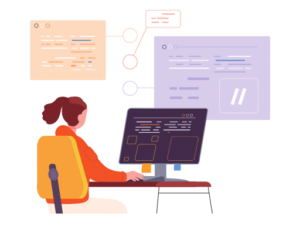
This unit emphasises algorithm design and problem-solving techniques, essential skills in computer science.
| Algorithms and Flowcharts: Definition of algorithms and flowcharts, their importance in problem-solving, and how to design and use them.
Control Structures: Introduction to control structures (selection, repetition), their role in programming, and how to use them to solve problems. Modular Programming: Definition of modular programming, advantages, and how to use it to solve complex problems by breaking them down into smaller parts. String Manipulation: Definition of string manipulation, examples of string manipulation operations, and their use in problem-solving. Sorting and Searching Algorithms: Introduction to sorting and searching algorithms, their importance in problem-solving, and how to design and use them. Problem-solving Techniques: General problem-solving techniques that can be applied to programming, such as understanding the problem, breaking it down into manageable parts, and developing a plan to solve it. Analysis of Algorithms: Methods for analyzing algorithms to determine their efficiency and complexity, including time and space complexity analysis. |
Unit 8: Programming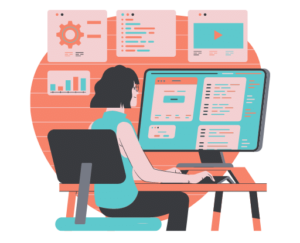
Students learn programming concepts and languages, adhering to the IGCSE Computer Science curriculum, to develop software solutions.
| Subtopic Number | Subtopic | IGCSE Points to understand |
| 8.1 | Programming concepts | Programming Languages – This involves an overview of the different types of programming languages, their features and syntax, and their strengths and weaknesses.
Programming Paradigms – This refers to the different approaches to programming, such as procedural, object-oriented, and event-driven programming, and how they can be used to solve different types of problems. Variables and Data Types – This covers the concept of variables and data types, including integers, floating-point numbers, strings, and Boolean values, and how they are used in programming. Operators and Expressions – This deals with the different types of operators, such as arithmetic, comparison, and logical operators, and how expressions are used in programming to perform calculations and make decisions. Control Structures – This includes the different types of control structures, such as loops, conditional statements, and case structures, and how they are used in programming to control the flow of code. Subroutines and Functions – This covers the concept of subroutines and functions, how they are used to break down complex programs into smaller, more manageable parts, and how they can be used to make code more reusable. Arrays and Lists – This involves an overview of arrays and lists, how they are used to store collections of data, and how they can be manipulated in programming. |
| 8.2 | Arrays | Arrays are a fundamental data structure used in programming to store a collection of elements of the same type in contiguous memory locations. Each element in the array is identified by its index, which is an integer value representing its position in the array. |
| 8.3 | File Handling | File I/O Operations: It involves opening a file, reading data from the file, writing data to the file, and closing the file. File I/O operations help programmers to store data for future reference and to retrieve data stored in the file.
File Types: There are several types of files that can be used in file handling, including text files, binary files, and CSV files. These files differ in their format, structure, and the way data is stored in them. Error Handling: Error handling is an important part of file handling that helps programmers to deal with errors that may occur while reading or writing data to a file. Common errors include file not found, permission denied, and disk full errors. File Access Modes: File access modes determine how a file can be accessed, such as read-only mode, write-only mode, and read-write mode. These modes are essential to protect data integrity and ensure that data is not accidentally modified. Direct Access Files: This involves accessing files by reading and writing data directly to and from a specific location in the file. Direct access files are used to store large amounts of data and to optimize file access speed. |
Unit 9: Databases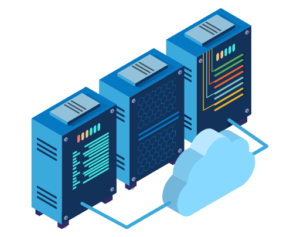
This unit explores database management and design principles.
| A database is a collection of data that is organized and stored in a way that allows efficient retrieval and manipulation of that data.
Types of databases: There are several types of databases, including relational databases, non-relational databases, hierarchical databases, network databases, and object-oriented databases. Relational databases: A relational database is a database that stores data in tables, with each table consisting of rows and columns. The relationships between tables are defined by foreign keys. Non-relational databases: A non-relational database, also known as a NoSQL database, is a database that does not use tables to store data. Instead, it uses a variety of data models, such as document-oriented or key-value pairs. Database management systems (DBMS): A DBMS is a software system that allows users to create, update, and manage databases. Popular DBMS software includes MySQL, Oracle, and Microsoft SQL Server. SQL (Structured Query Language): SQL is a programming language used to manage relational databases. It is used to create, modify, and delete tables, and to retrieve and manipulate data in those tables. Data normalization: Data normalization is the process of organizing data in a database to reduce redundancy and improve data integrity. It involves creating tables with the appropriate relationships and constraints to ensure that data is consistent and accurate. Data security: Data security is an important aspect of database management. It involves ensuring that data is protected from unauthorized access, theft, or corruption. Techniques used to secure data include access control, encryption, and backups. |
Unit 10: Boolean Logic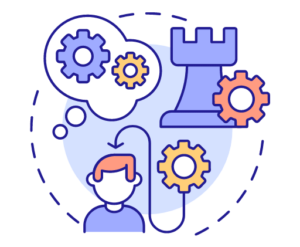
This unit covers Boolean logic and its applications in digital circuits and programming, as outlined in both the IB Computer Science Syllabus and IGCSE Computer Science curriculum.
| Boolean logic is a type of algebra that deals with binary variables and logical operations. In computer science, it is used to make decisions based on conditions that evaluate to either true or false.
Boolean variables: Boolean variables can take on only one of two possible values, usually represented as true or false, on or off, or 1 or 0. Logical operations: Logical operations are used to combine Boolean variables or expressions, such as AND, OR, and NOT. The truth table for each operation specifies the output for all possible combinations of input values. Boolean expressions: Boolean expressions are composed of Boolean variables and logical operations, and evaluate to either true or false. They are used to make decisions in programming, such as determining whether a condition is true or false and executing code accordingly. Boolean operators: Boolean operators are used to compare values and return true or false. The most commonly used operators are equals (==), not equals (!=), less than (<), greater than (>), less than or equal to (<=), and greater than or equal to (>=). Boolean logic gates: In digital electronics, Boolean logic gates are used to perform logical operations on binary signals. The basic gates are AND, OR, and NOT, which can be combined to create more complex circuits. |

